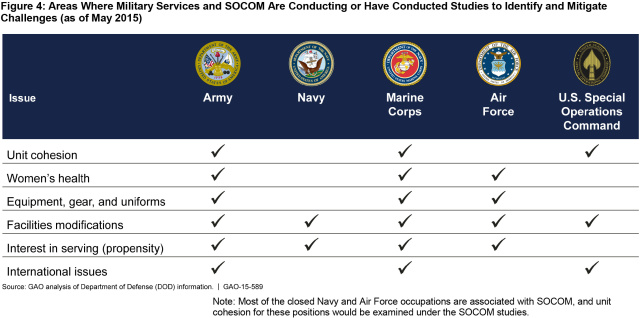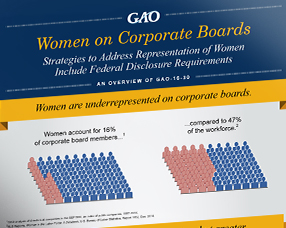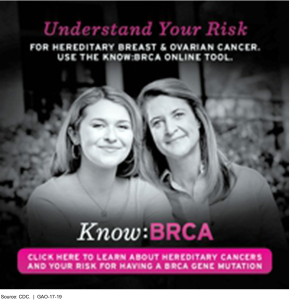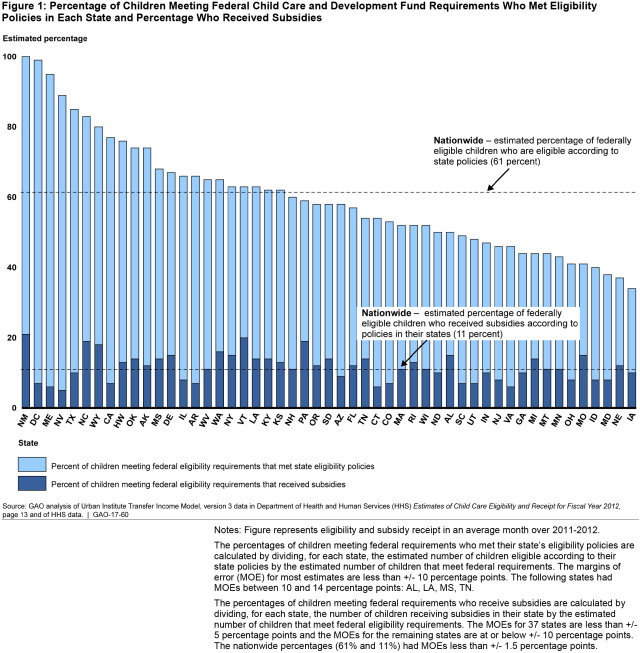Women’s History Month
 (Excerpted from GAO-15-589)
(Excerpted from GAO-15-589)
 While women have been making strides in the military, getting to the top of the corporate ladder remains a challenge. For example, we found that women continue to hold a lower percentage of corporate board seats than men—but women have been slowly catching up. The percentage of female board directors doubled from 8% to 16% between 1997 and 2014.
Still, gender parity on corporate boards could take decades to achieve due to a number of factors, including boards not recruiting diverse candidates and low turnover of board seats. Check out our report for more about the factors affecting women’s representation on corporate boards.
Medical research
We’ve also examined how National Institutes of Health clinical trials take into account the biological differences between women and men. These differences can result in some drugs or treatments affecting women differently than men—sometimes with dangerous effect. This is why NIH requires its clinical research to include women. However, we found issues with how NIH assessed its efforts to meet these requirements.
We recommended that NIH examine more detailed data on women’s enrollment in their health studies, including whether these studies analyze potential differences between women and men.
Health awareness
While women have been making strides in the military, getting to the top of the corporate ladder remains a challenge. For example, we found that women continue to hold a lower percentage of corporate board seats than men—but women have been slowly catching up. The percentage of female board directors doubled from 8% to 16% between 1997 and 2014.
Still, gender parity on corporate boards could take decades to achieve due to a number of factors, including boards not recruiting diverse candidates and low turnover of board seats. Check out our report for more about the factors affecting women’s representation on corporate boards.
Medical research
We’ve also examined how National Institutes of Health clinical trials take into account the biological differences between women and men. These differences can result in some drugs or treatments affecting women differently than men—sometimes with dangerous effect. This is why NIH requires its clinical research to include women. However, we found issues with how NIH assessed its efforts to meet these requirements.
We recommended that NIH examine more detailed data on women’s enrollment in their health studies, including whether these studies analyze potential differences between women and men.
Health awareness
 Certain health conditions are more prevalent in women—which has implications for health education and outreach. We recently looked at breast cancer education and found that, while most breast cancer is detected in older women, young women (45 years old and younger) account for 11% of all new cases in the United States.
Researchers have found that this group of women tends to be diagnosed with breast cancer at a later stage, experience worse outcomes, and face unique issues in their treatment (such as effects on fertility).
Our report highlighted federal efforts to provide breast cancer education and support to young women, including Know: BRCA—an interactive tool that helps women assess their risk of developing cancer.
Child care
Finally, while child care isn’t just about women, it is of concern to many women. We looked at child care subsidies for low-income families that help families pay for care so that parents can work or attend school or training.
We found that more than 14 million children under age 13 nationwide met federal requirements for care in an average month. Yet, only about 1.5 million children received subsidies. When compared with all eligible children, those receiving subsidies tended to be younger (under age 5) and poorer (in families below federal poverty guidelines). You can also see how children meeting federal requirements compares to children eligible for and receiving subsidies in your state:
Certain health conditions are more prevalent in women—which has implications for health education and outreach. We recently looked at breast cancer education and found that, while most breast cancer is detected in older women, young women (45 years old and younger) account for 11% of all new cases in the United States.
Researchers have found that this group of women tends to be diagnosed with breast cancer at a later stage, experience worse outcomes, and face unique issues in their treatment (such as effects on fertility).
Our report highlighted federal efforts to provide breast cancer education and support to young women, including Know: BRCA—an interactive tool that helps women assess their risk of developing cancer.
Child care
Finally, while child care isn’t just about women, it is of concern to many women. We looked at child care subsidies for low-income families that help families pay for care so that parents can work or attend school or training.
We found that more than 14 million children under age 13 nationwide met federal requirements for care in an average month. Yet, only about 1.5 million children received subsidies. When compared with all eligible children, those receiving subsidies tended to be younger (under age 5) and poorer (in families below federal poverty guidelines). You can also see how children meeting federal requirements compares to children eligible for and receiving subsidies in your state:
 (Excerpted from GAO-17-60)
(Excerpted from GAO-17-60)
- Questions on the content of this post? Contact Chuck Young at youngc1@gao.gov
- Comments on GAO’s WatchBlog? Contact blog@gao.gov.

GAO's mission is to provide Congress with fact-based, nonpartisan information that can help improve federal government performance and ensure accountability for the benefit of the American people. GAO launched its WatchBlog in January, 2014, as part of its continuing effort to reach its audiences—Congress and the American people—where they are currently looking for information.
The blog format allows GAO to provide a little more context about its work than it can offer on its other social media platforms. Posts will tie GAO work to current events and the news; show how GAO’s work is affecting agencies or legislation; highlight reports, testimonies, and issue areas where GAO does work; and provide information about GAO itself, among other things.
Please send any feedback on GAO's WatchBlog to blog@gao.gov.
